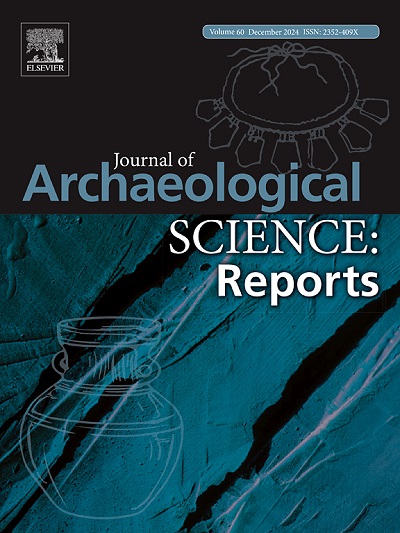旧石器时代中期伊比利亚西北部的景观和生存(MIS3):西班牙加利西亚Triacastela地区Cova Eirós的区系分析
IF 1.5
2区 历史学
0 ARCHAEOLOGY
引用次数: 0
摘要
Cova Eirós是了解伊比利亚半岛西北部晚期尼安德特人生活的关键参考地点,提供了广泛的穆斯特序列,由于其晚年代学(约41 ka cal BP),第3级突出。当试图重建这些晚期尼安德特人生活的环境时,它重要的动物考古记录是一个有价值的信息来源。在这项研究中,我们建议对上述第3层的大型动物和小型脊椎动物记录进行综合分析,以扩大我们对其动物群谱的了解,以及它是如何被占据洞穴的各种生物利用的。我们还利用生物气候模型和生境加权方法进行了古气候和古环境研究,重建了尼安德特狩猎采集者的生活条件。该研究已经确定了31个分类群(NISP = 3746),特别强调了鹿角(Cervus elaphus)和大熊(Ursus spelaeus)的开发,以及食肉动物贡献较小有蹄类动物的证据。环境重建反映了一个较冷和稍不湿润的气候,以森林为主,穿插着开阔的空间。这些数据可以作为穆斯特人群体占据坎塔布里安山脉沿线避难地区的趋势的一个例子,表明在穆斯特时期的最后阶段,尼安德特人在伊比利亚半岛西北部的存在是在有利的气候条件下发生的。本文章由计算机程序翻译,如有差异,请以英文原文为准。
Landscape and subsistence in NW Iberia during the Middle Palaeolithic (MIS3): Faunal analysis of Cova Eirós (Triacastela, Galicia, Spain)
Cova Eirós is a key reference site for understanding the life of the late Neanderthal groups in the northwest of the Iberian Peninsula, offering an extensive Mousterian sequence with level 3 standing out due to its late chronology (c. 41 ka cal BP). Its significant zooarchaeological record is a valuable source of information when attempting to reconstruct the environment in which these late Neanderthals lived. In this study, we propose a comprehensive analysis of the macrofaunal and small vertebrates record from the aforementioned level 3 to expand our knowledge of its faunal spectrum and how it was exploited by the various agents that occupied the cave. We also conducted a paleoclimatic and paleoenvironmental study employing the Bioclimatic Model and Habitat Weighting methods to reconstruct the conditions in which Neanderthal hunter-gatherers lived. The study has identified 31 taxa (NISP = 3746), with a particular emphasis on the exploitation of Cervus elaphus and Ursus spelaeus, as well as evidence of carnivores contributing smaller ungulates. The environmental reconstruction reflects a colder and slightly less humid climate, dominated by forests interspersed with open spaces. These data serve as an example of the tendency of Mousterian groups to occupy refuge areas along the Cantabrian Mountains, demonstrating that Neanderthal presence in the northwest of the Iberian Peninsula during the final phase of the Mousterian took place under favourable climatic conditions.
求助全文
通过发布文献求助,成功后即可免费获取论文全文。
去求助
来源期刊

Journal of Archaeological Science-Reports
ARCHAEOLOGY-
CiteScore
3.10
自引率
12.50%
发文量
405
期刊介绍:
Journal of Archaeological Science: Reports is aimed at archaeologists and scientists engaged with the application of scientific techniques and methodologies to all areas of archaeology. The journal focuses on the results of the application of scientific methods to archaeological problems and debates. It will provide a forum for reviews and scientific debate of issues in scientific archaeology and their impact in the wider subject. Journal of Archaeological Science: Reports will publish papers of excellent archaeological science, with regional or wider interest. This will include case studies, reviews and short papers where an established scientific technique sheds light on archaeological questions and debates.
 求助内容:
求助内容: 应助结果提醒方式:
应助结果提醒方式:


